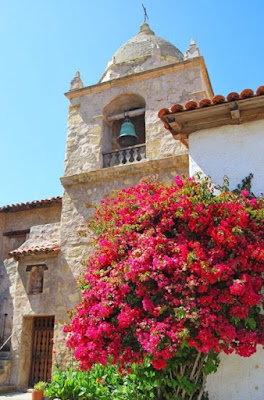Which, taken at the flood, leads on to fortune;
Omitted, all the voyage of their life
Is bound in shallows and in miseries.
On such a full sea are we now afloat…
This is from Shakespeare’s Julius Caesar, at the moment when Brutus is encouraging Caesar to act because the time is right, and there’s no better time likely to come soon.
There’s an equivalent moment in the life of plants that’s equally propitious… Or is it?
I’ve noticed something as I wander around, looking at plants and trees: Sometimes the pine trees that look to be in terrible shape often have the most pine cones.
Is there a connection here? Do dying pine trees actually produce a last gasp of cone production? And if that’s true, should I worry about those pine trees that suddenly produce a bunch of pine cones?
I was also noticing this about the bougainvillea in my front yard. As you can see, there are lots of flowers on it, but very few leaves.
This is a beautiful plant, but it’s not really very robust. It SHOULD look like this (from the Carmel Mission, near Monterey, CA):
This observation about the “tide in the affairs..” of plants leads to this week’s SRS Challenge:
1. Does dying (or nearly dying) lead to a sudden efflorescence in plants?
2. If so, what causes this effect? How does the plant “know” this, and respond?
3. Is this “sudden efflorescence” from a near-death experience true for any other plants?
When I searched for this, I found that I had to learn a bit of language in order to make good queries.
Let us know how you found the answers!
I’ll be back in a week (Wednesday, Nov 22) with my answer. In the meantime, may you and all of your plants and trees be in good health.
Search on!








